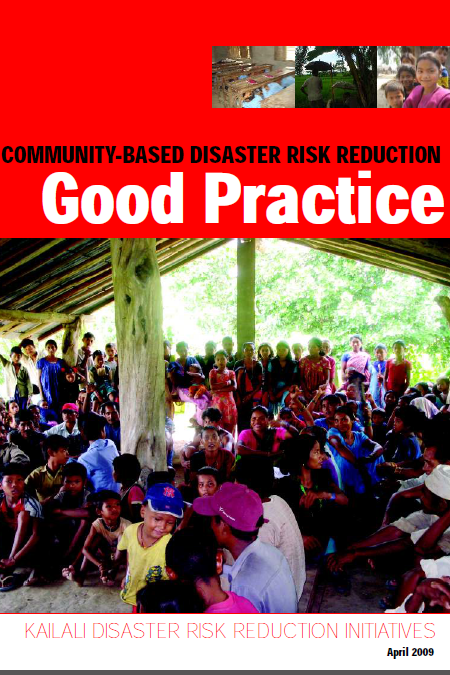Community-based disaster risk reduction

KAILALI DISASTER RISK REDUCTION INITIATIVES
Author:
Dhruba Raj Gautam
Independent researcher and consultant
E-mail:
This email address is being protected from spambots. You need JavaScript enabled to view it.
Special contributors: Ulla Dons, Chet Bahadur Tamang, Sagar Pokharel, Himal Ojha and Tej Maya Gurung
Photo contributors: Sagar Pokharel, Chet Bahadur Tamang, Himal Ojha, Dhruba Raj Gautam and Ulla Dons
Editor: Perry Thapa
Photos:
Front cover: Community meeting
Back cover: Row wise left to right
1st row: Earth quake simulation in a school, Children inspecting slope bank protection work, Smiling Children
2nd row: Water level recording, Bio-engineering intervention, School girl participating in art competition
3rd row: Search and rescue team members, Street Drama a men of awareness raising
4th row: Inundated house, Building First Aid capacity, Transportation of construction material
Design and Printing: Mind Share Communications Pvt. Ltd.
Published by: Mercy Corps Nepal, Lalitpur, Nepal
The views expressed in this document should not be taken in a way to reflect those of the European Commission, and the European Commission is not liable for any use of the information contained herein.
Foreword
Addressing the role disasters play in perpetuating the cycle of poverty and in undermining development is increasingly being recognized as a major global challenge that demands attention. Approximately 70% of recent disasters are weather-related and this proportion is likely to grow as climate change processes increase the unpredictability and intensity of weather events. In response to this growing problem, Mercy Corps Nepal began working in the field of community-based disaster risk reduction in 2007, focusing on flood-prone areas and introducing capacity building, early warning systems, small-scale mitigation measures and school safety through peer education. Based on its own learning, continual community feed-back, and a real-time evaluation during the September 2008 flood in the Far-Western Development Region of Nepal, Mercy Corps has identified 10 areas of good practice which are documented in this report.
I would like to express my thanks to all the contributors to this report, particularly the project team and Dhruba Raj Gautam. Without their hard work, this important piece of work would not have come together. I also extend my heartfelt thanks to all the women, men and children in the communities in Kailali District for their partnership in bringing about a change. Mercy Corps hopes this summary of its successes in community-based disaster risk reduction offers practical insight into how such initiatives can be replicated and developed elsewhere. We encourage you to make use of the enclosed CD/DVD for further inspiration.
Ulla Dons
Project Manager


































